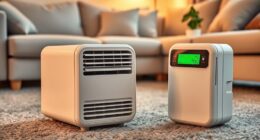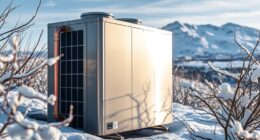Are you looking for ways to boost the efficiency of your heat pump in your eco-friendly building? We’ve got you covered.
In this article, we’ll explore practical tips and strategies to optimize your heat pump’s performance and reduce energy consumption.
From selecting the right size and type of heat pump to implementing smart thermostat controls, we’ll show you how to maximize efficiency and save money.
Get ready to take your eco-friendly building to the next level.

Key Takeaways
- Heat pump energy consumption plays a significant role in the overall energy efficiency of a building.
- Selecting the right size and type of heat pump is crucial for maximizing energy efficiency.
- Optimizing heat pump installation and placement factors can greatly enhance efficiency.
- Implementing smart thermostat controls can further enhance heat pump efficiency in eco-friendly buildings.
- Regular maintenance and cleaning are essential for improving heat pump efficiency and extending its lifespan.
Understanding the Importance of Heat Pump Efficiency in Green Buildings
Now let’s delve into why heat pump efficiency is crucial in green buildings.
Heat pump energy consumption plays a significant role in the overall energy efficiency of a building. Green buildings strive to maximize energy efficiency and minimize environmental impact, and heat pumps are key in achieving these goals.
Heat pump performance evaluation is essential to ensure that the system operates at its highest efficiency level. By evaluating the performance of the heat pump, we can identify any inefficiencies or areas for improvement. This allows us to optimize the system and reduce energy consumption, resulting in lower utility bills and a smaller carbon footprint.
Therefore, understanding heat pump efficiency is vital for green buildings as it directly impacts the overall sustainability and energy performance of the building.

Selecting the Right Size and Type of Heat Pump for Energy Efficiency
To ensure energy efficiency, we must carefully select the right size and type of heat pump for our eco-friendly buildings. Heat pump sizing and types play a crucial role in optimizing energy consumption and reducing costs. When it comes to heat pump sizing, it is essential to consider the building’s heating and cooling demands. Undersized heat pumps may struggle to meet the required temperature levels, resulting in increased energy consumption. On the other hand, oversized heat pumps may cycle on and off frequently, wasting energy and causing wear and tear. Additionally, choosing the right type of heat pump is equally important. There are several options available, including air-source, ground-source, and water-source heat pumps, each with its own advantages and considerations. By carefully selecting the appropriate size and type of heat pump, we can maximize energy efficiency in our eco-friendly buildings.
| Heat Pump Sizing | Heat Pump Types |
|---|---|
| Consider building’s heating and cooling demands | Air-source heat pumps |
| Avoid undersized or oversized heat pumps | Ground-source heat pumps |
| Optimize energy consumption and reduce costs | Water-source heat pumps |
In the next section, we will discuss optimizing heat pump installation and placement for maximum efficiency.
Optimizing Heat Pump Installation and Placement for Maximum Efficiency
We can optimize the installation and placement of our heat pump for maximum efficiency by considering factors such as orientation, airflow, and insulation.
Heat pump technology advancements have made it possible to achieve higher levels of efficiency.

When installing the heat pump, it’s important to consider its orientation in relation to the sun’s path. Placing the heat pump in a location that receives maximum sunlight can improve its performance.
Additionally, ensuring proper airflow around the unit is crucial. This can be achieved by removing any obstructions that may restrict airflow.
Furthermore, optimizing heat pump refrigerant flow is essential for efficient operation. This can be achieved by correctly sizing and installing the refrigerant lines.
By considering these factors during installation and placement, we can maximize the efficiency of our heat pump and enhance its overall performance.
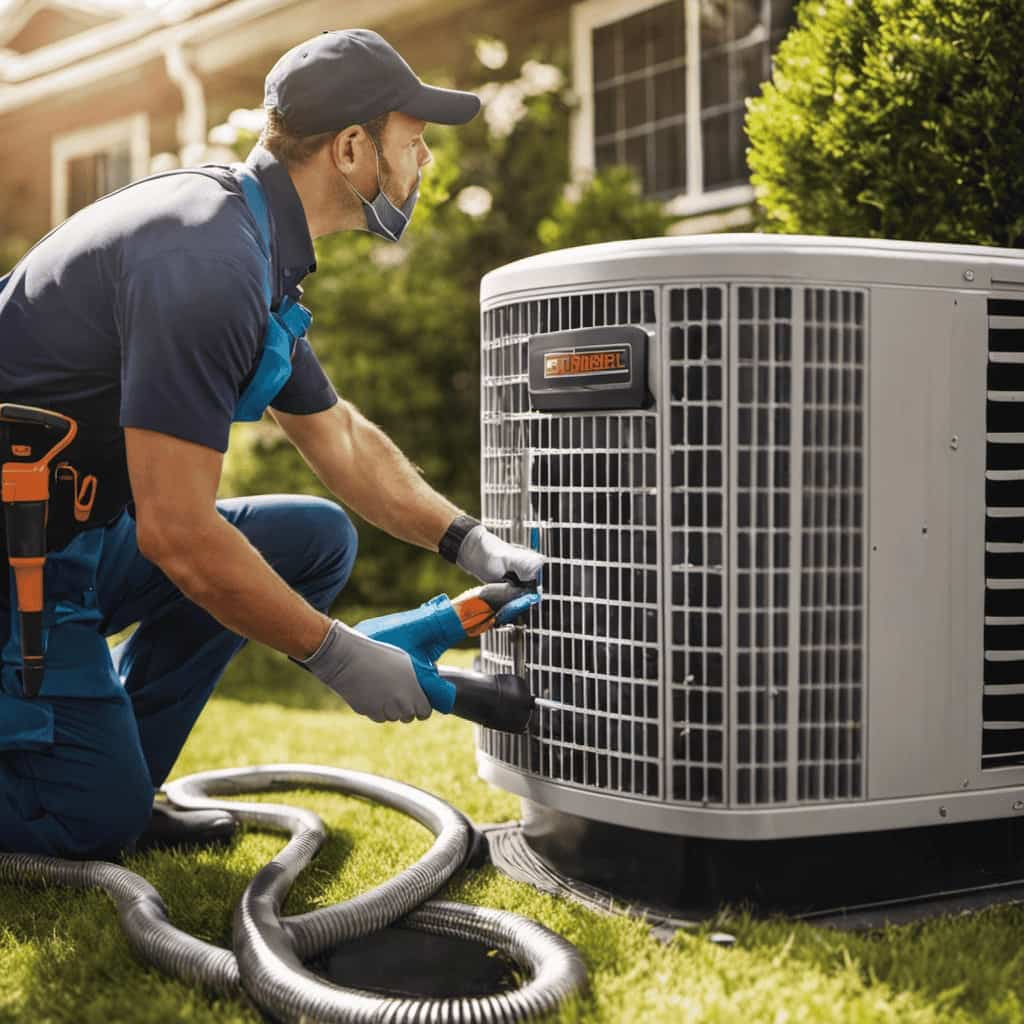
In the next section, we’ll explore the benefits of implementing smart thermostat controls to further enhance heat pump efficiency.
Implementing Smart Thermostat Controls to Enhance Heat Pump Efficiency
By utilizing smart thermostat controls, we can enhance the efficiency of our heat pump. Here are three ways smart thermostats can improve heat pump efficiency:
-
Smart thermostat compatibility: Smart thermostats are designed to work seamlessly with heat pumps, allowing for better integration and control. This compatibility ensures that the heat pump operates at its optimal performance, reducing energy waste.
-
Energy saving temperature settings: Smart thermostats offer advanced programming features that allow users to set energy-saving temperature settings. By adjusting the temperature according to occupancy patterns and preferences, the heat pump operates more efficiently, saving energy and reducing utility bills.
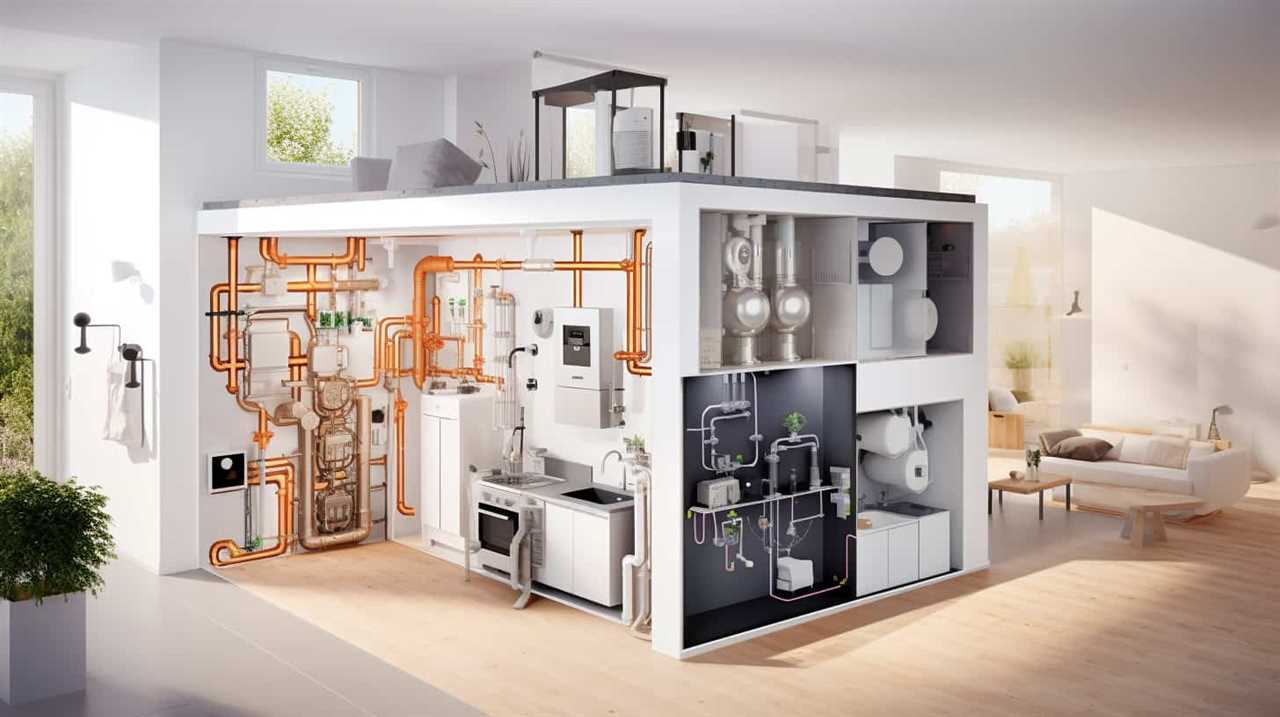
-
Remote access and monitoring: Smart thermostats provide remote access and monitoring capabilities through smartphone apps or web interfaces. This allows users to control and monitor the heat pump’s settings and performance from anywhere, ensuring that it operates efficiently even when no one is at home.
Regular Maintenance and Cleaning Tips for Improving Heat Pump Efficiency
Regular maintenance and cleaning significantly improve the efficiency of our heat pump. By implementing regular maintenance and cleaning techniques, we can ensure optimal performance and extend the lifespan of our heat pump. Here are some essential maintenance tasks and cleaning tips to enhance the efficiency of our heat pump:
| Maintenance Task | Cleaning Technique | Benefits |
|---|---|---|
| Clean or replace filters | Vacuum or wash filters | Improves airflow |
| Check and clean coils | Use coil cleaner and brush | Enhances heat transfer |
| Lubricate moving parts | Apply lubricant as needed | Reduces friction and noise |
| Inspect ductwork | Seal leaks and insulate | Prevents energy loss |
Regularly performing these maintenance tasks and cleaning techniques will ensure that our heat pump operates at its highest efficiency, saving energy and reducing our carbon footprint. It is important to follow manufacturer guidelines and consult a professional for more specific maintenance and cleaning instructions.
Frequently Asked Questions
Are There Any Government Incentives or Rebates Available for Installing an Eco-Friendly Heat Pump in a Green Building?
There are government incentives and rebates available for installing eco-friendly heat pumps in green buildings. These incentives aim to promote the use of energy efficient appliances and reduce carbon emissions.

What Are Some Common Signs That Indicate a Heat Pump Is Not Operating Efficiently?
When a heat pump isn’t efficient, it’s like trying to swim against a strong current. Signs of inefficiency include poor heating or cooling, high energy bills, and strange noises. To improve efficiency, maintain regular maintenance and insulation.
Can a Heat Pump Be Used as the Sole Heating and Cooling System in a Green Building, or Does It Require Additional Support?
A heat pump can be used as the sole heating and cooling system in a green building, but regular heat pump maintenance is necessary to ensure its efficiency. The benefits of a heat pump in eco-friendly buildings include energy savings and reduced carbon emissions.
How Does the Location and Climate Affect the Efficiency of a Heat Pump in a Green Building?
Location and climate significantly impact the efficiency of a heat pump in eco-friendly buildings. By understanding these factors, we can optimize performance and maximize energy savings. Let’s delve deeper into how location and climate affect heat pump efficiency.
Are There Any Specific Building Requirements or Modifications Necessary to Optimize the Performance of a Heat Pump in a Green Building?
To optimize the performance of a heat pump in a green building, specific building requirements and modifications may be necessary. These could include efficient building design and reducing energy consumption to ensure maximum efficiency and effectiveness.
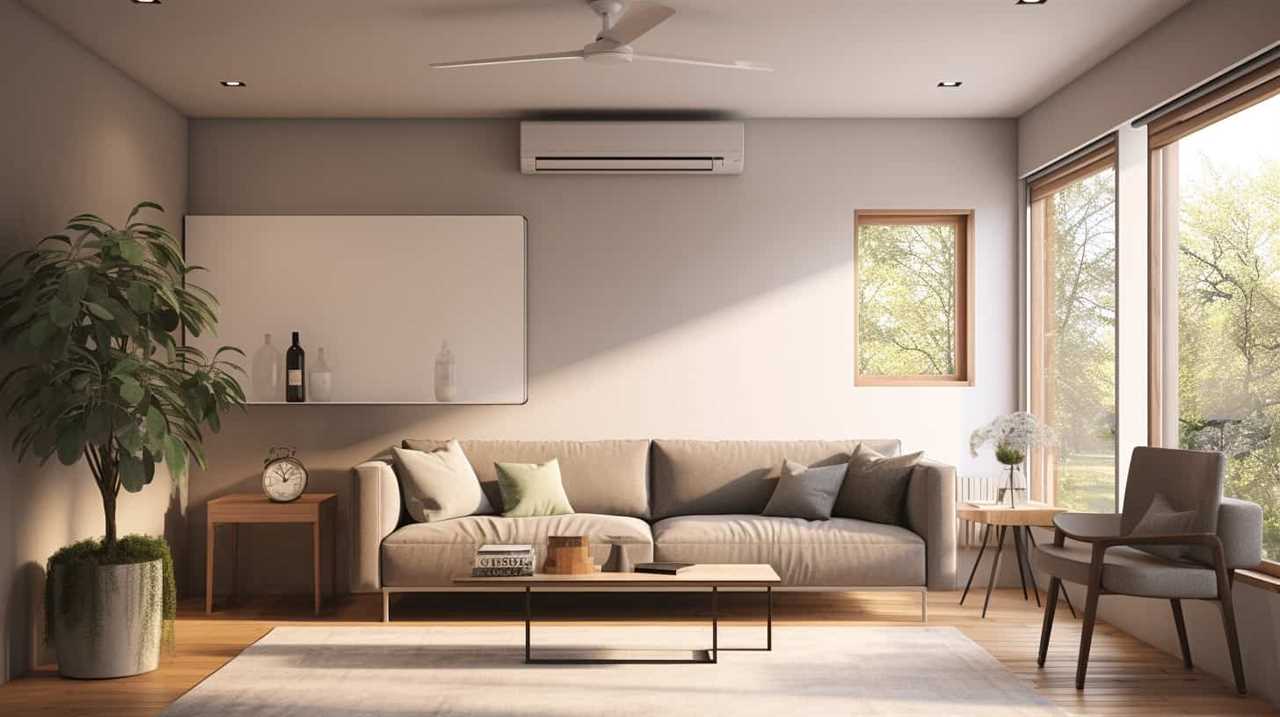
Conclusion
In conclusion, maximizing heat pump efficiency is crucial for eco-friendly buildings. By selecting the right size and type of heat pump, optimizing installation and placement, implementing smart thermostat controls, and maintaining regular cleaning, we can significantly improve energy efficiency.
Let’s strive towards a greener future where efficient heat pumps play a pivotal role in reducing our carbon footprint and preserving the environment for future generations. Together, we can create a sustainable and eco-friendly world.








